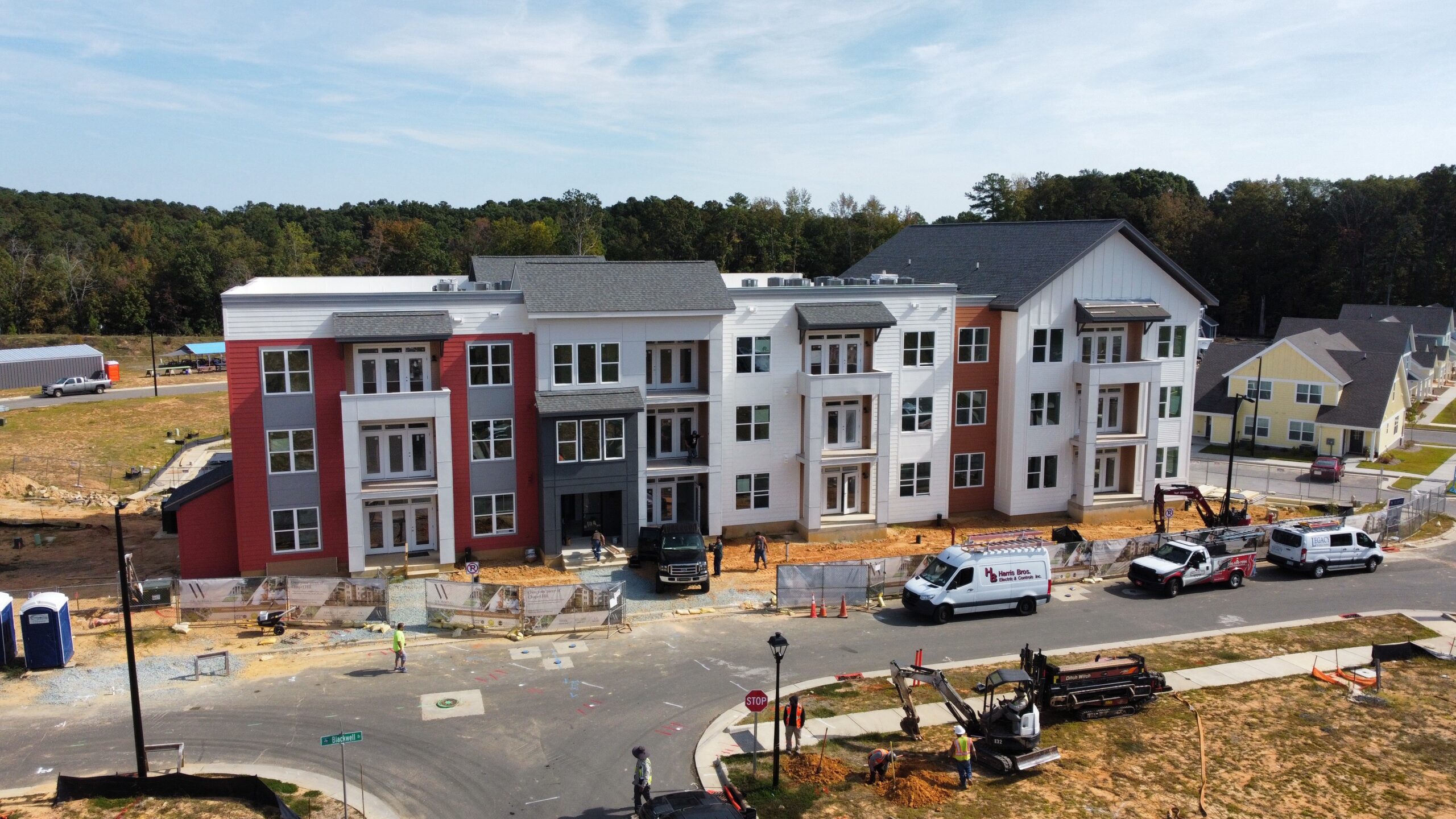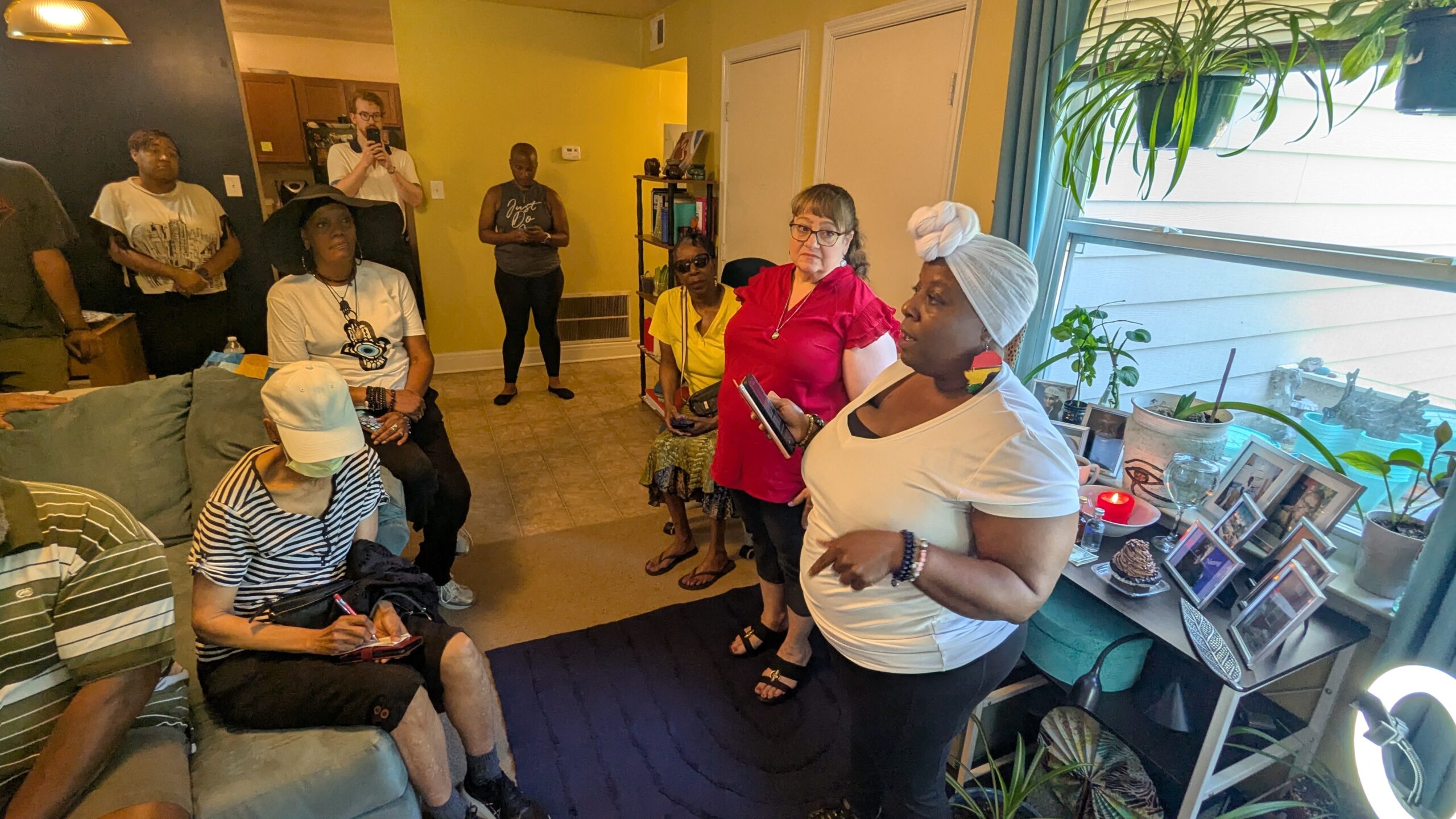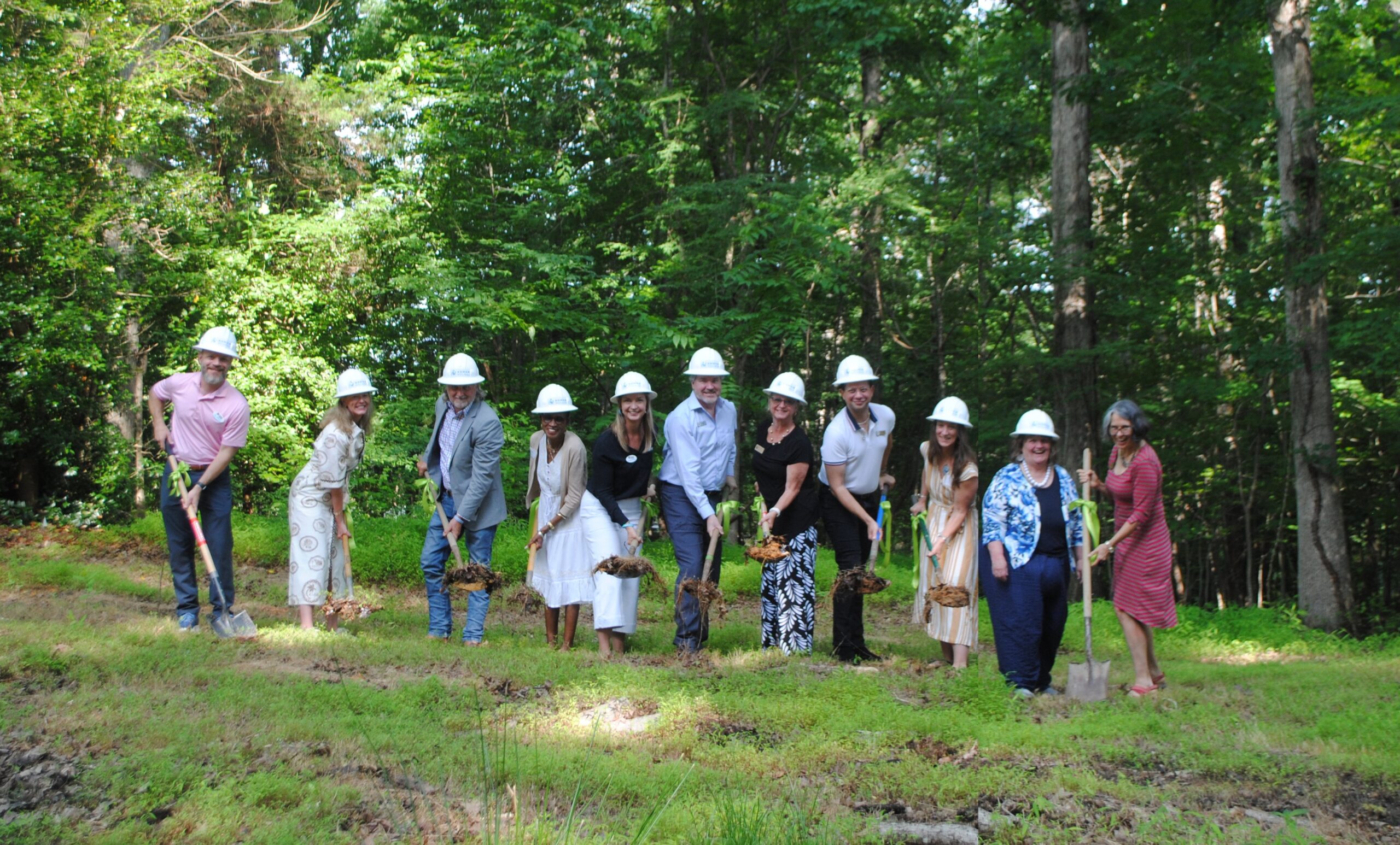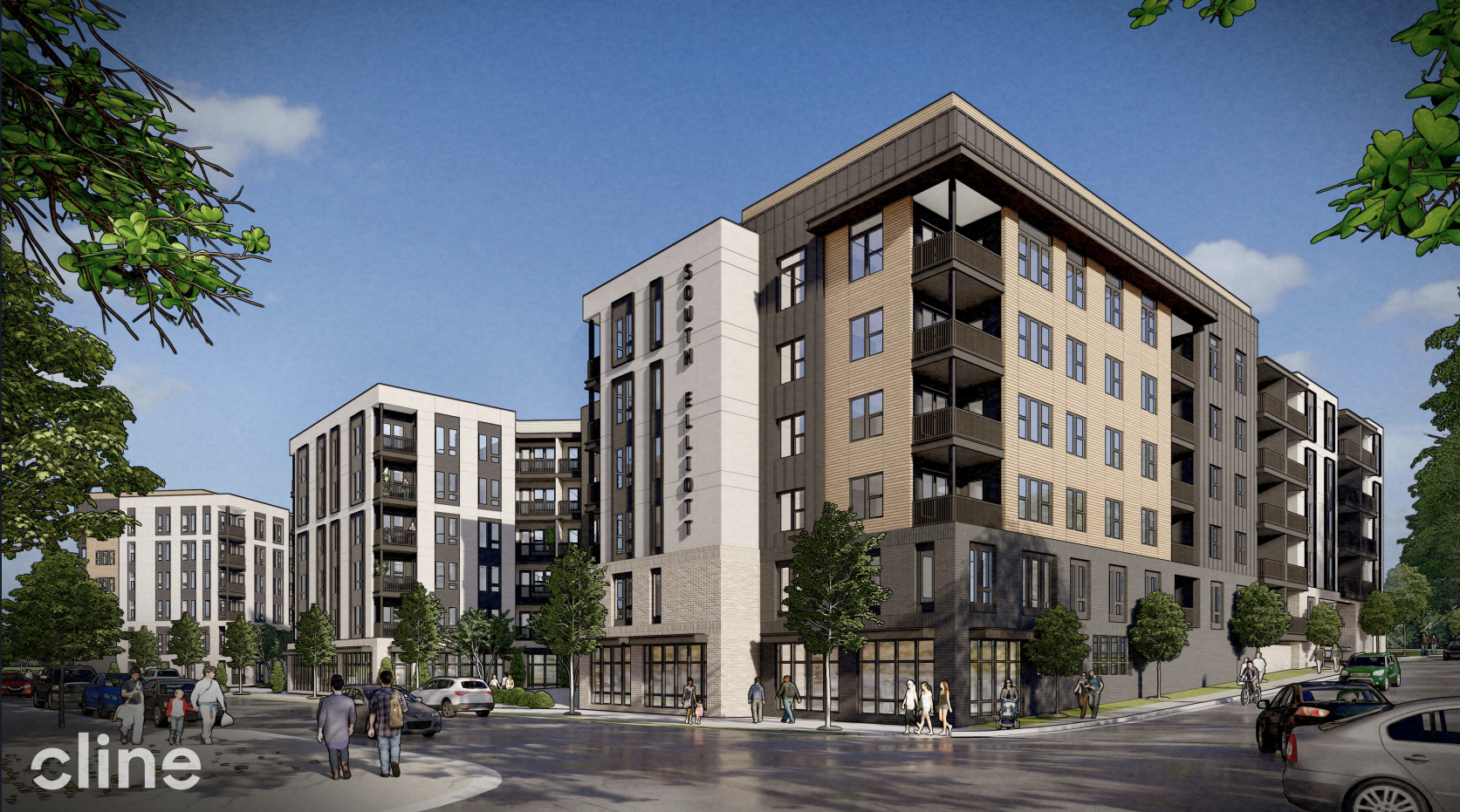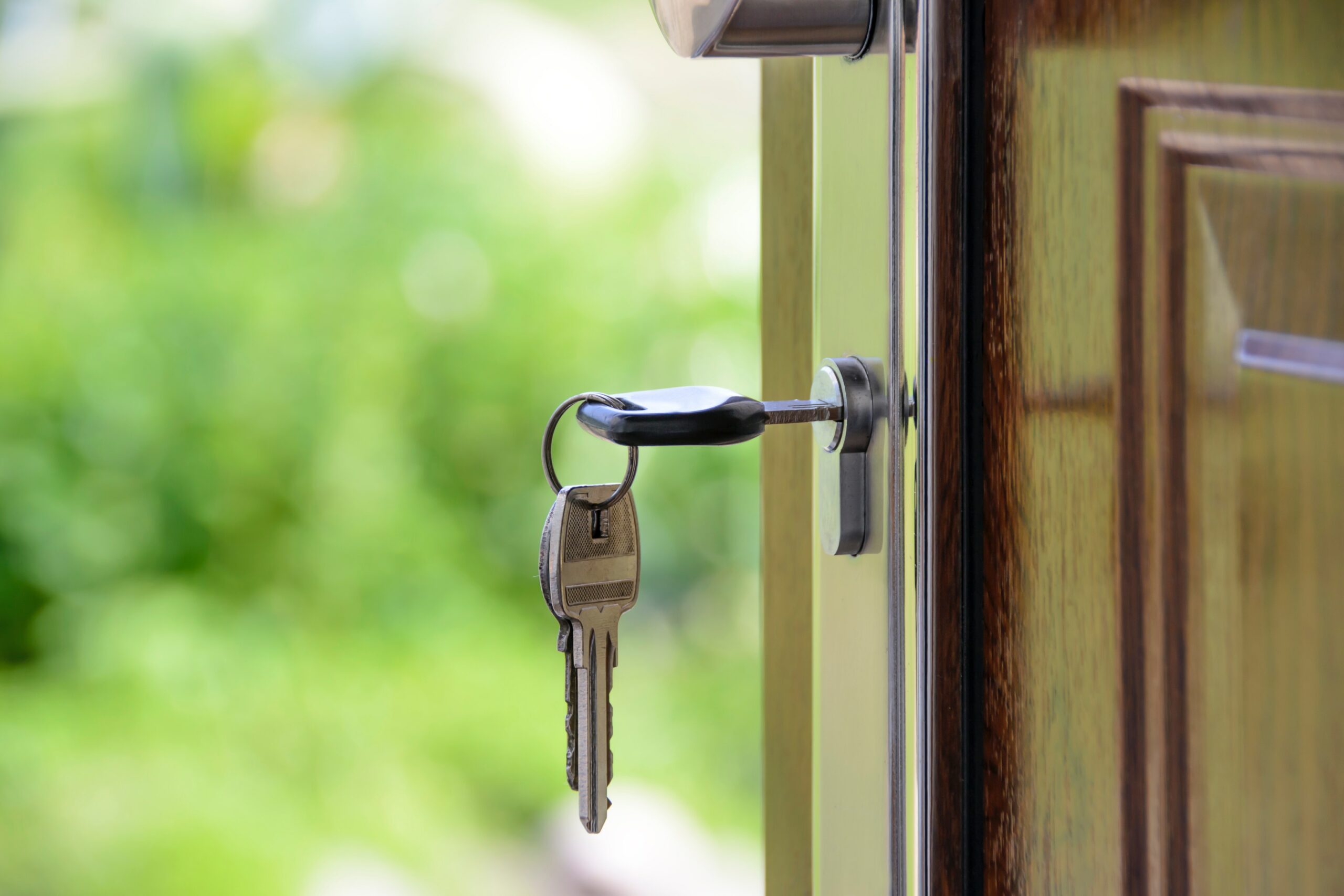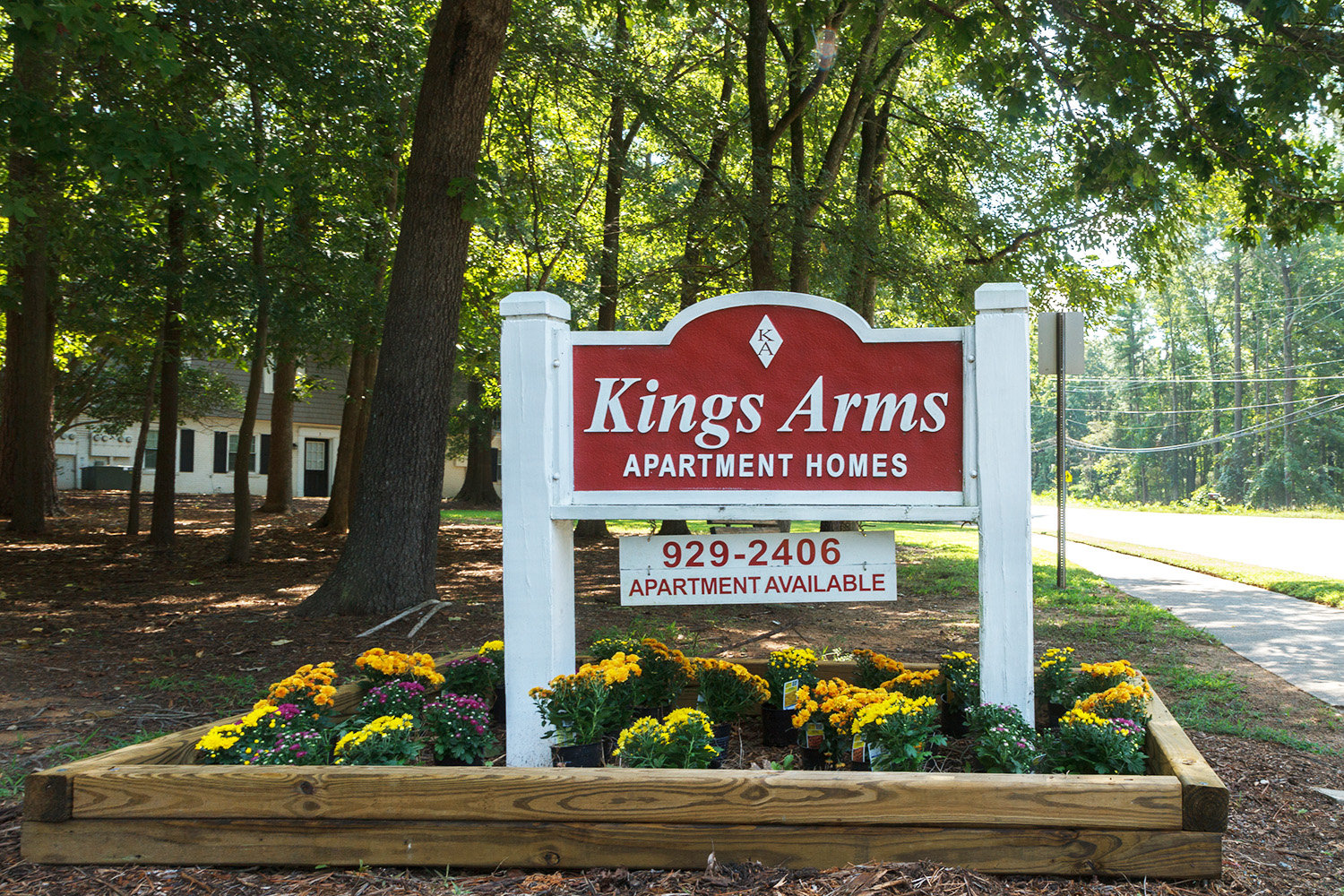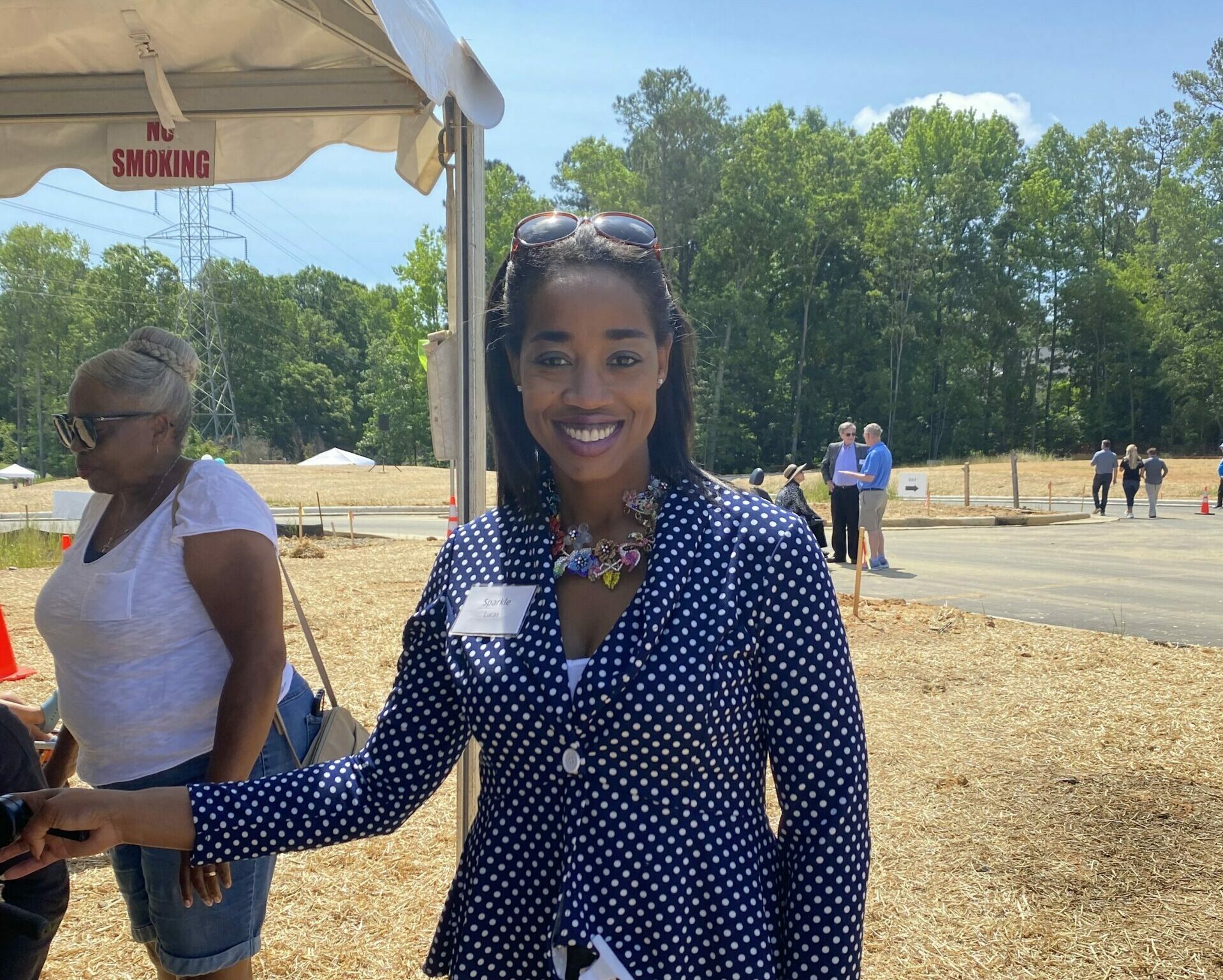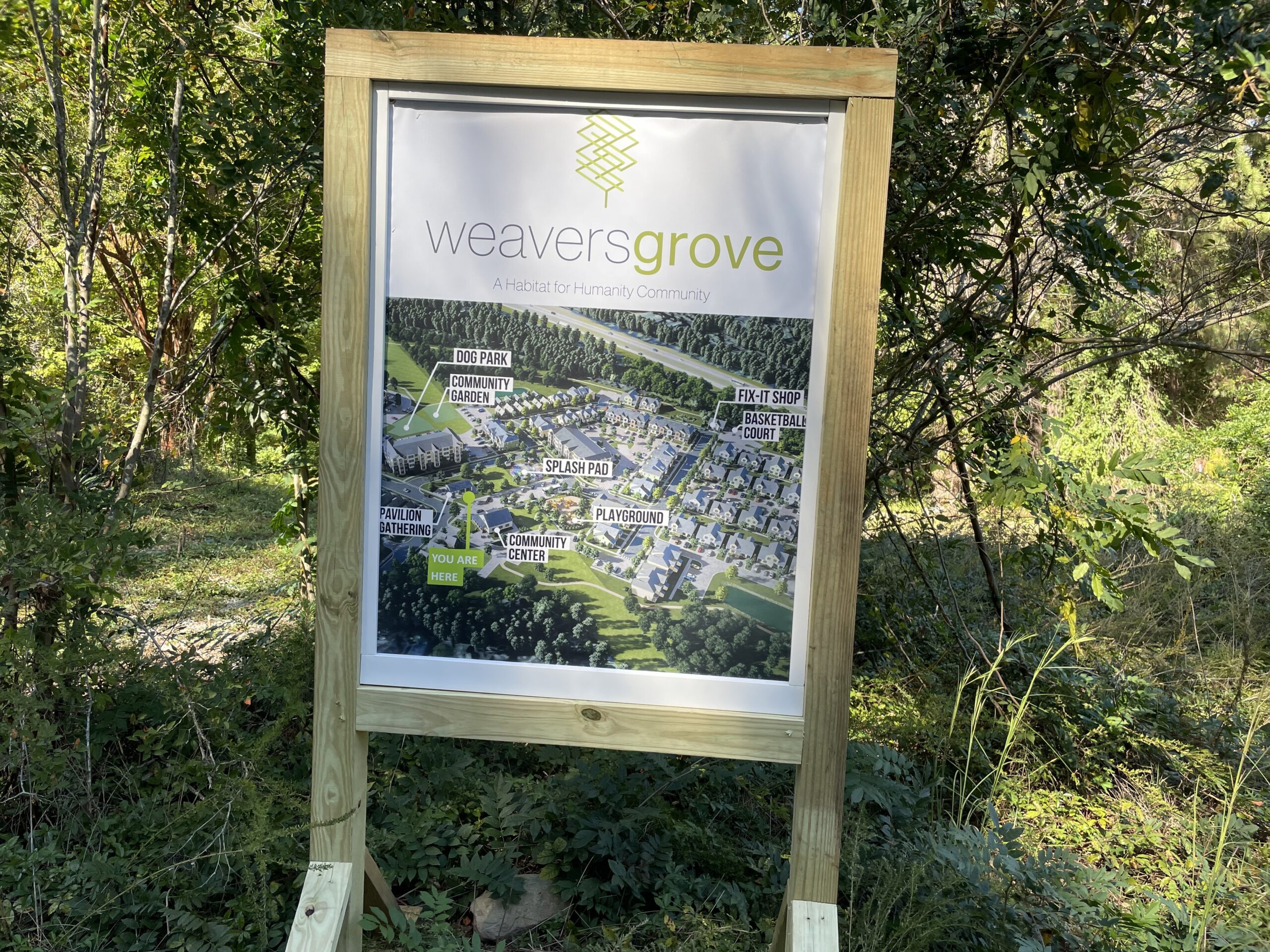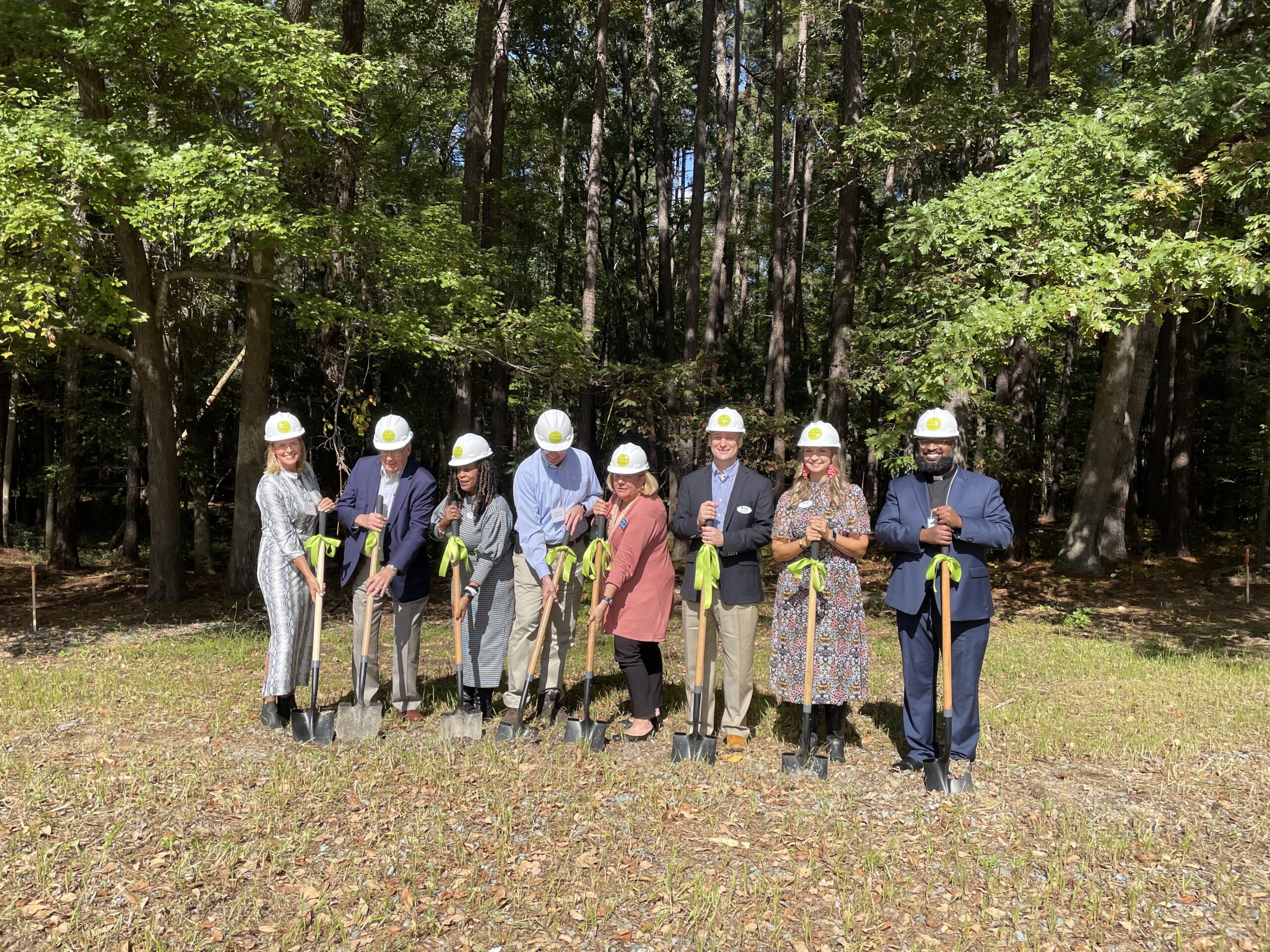A staple of the local Habitat for Humanity chapters in the Triangle returned on Friday, doing so in Chapel Hill at the site of a major ongoing project.
The Orange, Durham and Wake Habitats held their Triangle CEO Build at the Weavers Grove neighborhood under construction by the Orange County nonprofit. More than 50 leaders of major companies in the Research Triangle gathered to put together walls and frames for houses that will ultimately be part of 238 homes available in the mixed-income community not far from Weaver Dairy Road.
The CEO Build began in 2012, but Friday’s was the first between the Triangle Habitats since 2019 because the partnership was suspended during the COVID-19 pandemic. As part of the event, the CEOs heard from a future Habitat homeowner and representatives from the local nonprofit’s leadership team about who their work will be helping.
According to Orange Habitat President and CEO Jennifer Player, the build with such prominent business executives comes back at a critical time. Not only is Weavers Grove nearly a year into constructing houses, but the housing market for the Triangle continues to see scarcity among affordable options for low- to middle-income residents. Player pointed to studies conducted by the Chamber for a Greater Chapel Hill-Carrboro highlighting how the lack of affordable housing contributes to local businesses having workforce challenges.
“Differently than the CEO Build ten years ago,” she said, “the CEOs and executives of these companies are really feeling that they’re having a hard time hiring employees, retaining employees because they can’t afford to live where they work. It’s easier for an employee to live in Alamance County or an hour away.
“So,” Player continued, “I think the executives are really feeling it more personally than in the past. Not that that’s a good thing — but I think what had been kind of an invisible problem really is more visible now to so many people.”
Kari Stoltz, the president of Bank of America of the Triangle, was one of the corporate leaders participating in the event. She said the company and its leadership have sought to highlight the importance of such housing options in the area — and since Bank of America was an original sponsor of the CEO Build, it uses several ways to showcase that commitment.
“The most important thing is that we are demonstrating through our actions how importance this cause is,” said Stoltz, “by taking time off work to contribute to the community and help build this affordable housing. And it’s super exciting that this is a mixed-use area and that this isn’t just designated for Habitat. This is going to be a neighborhood for all.”
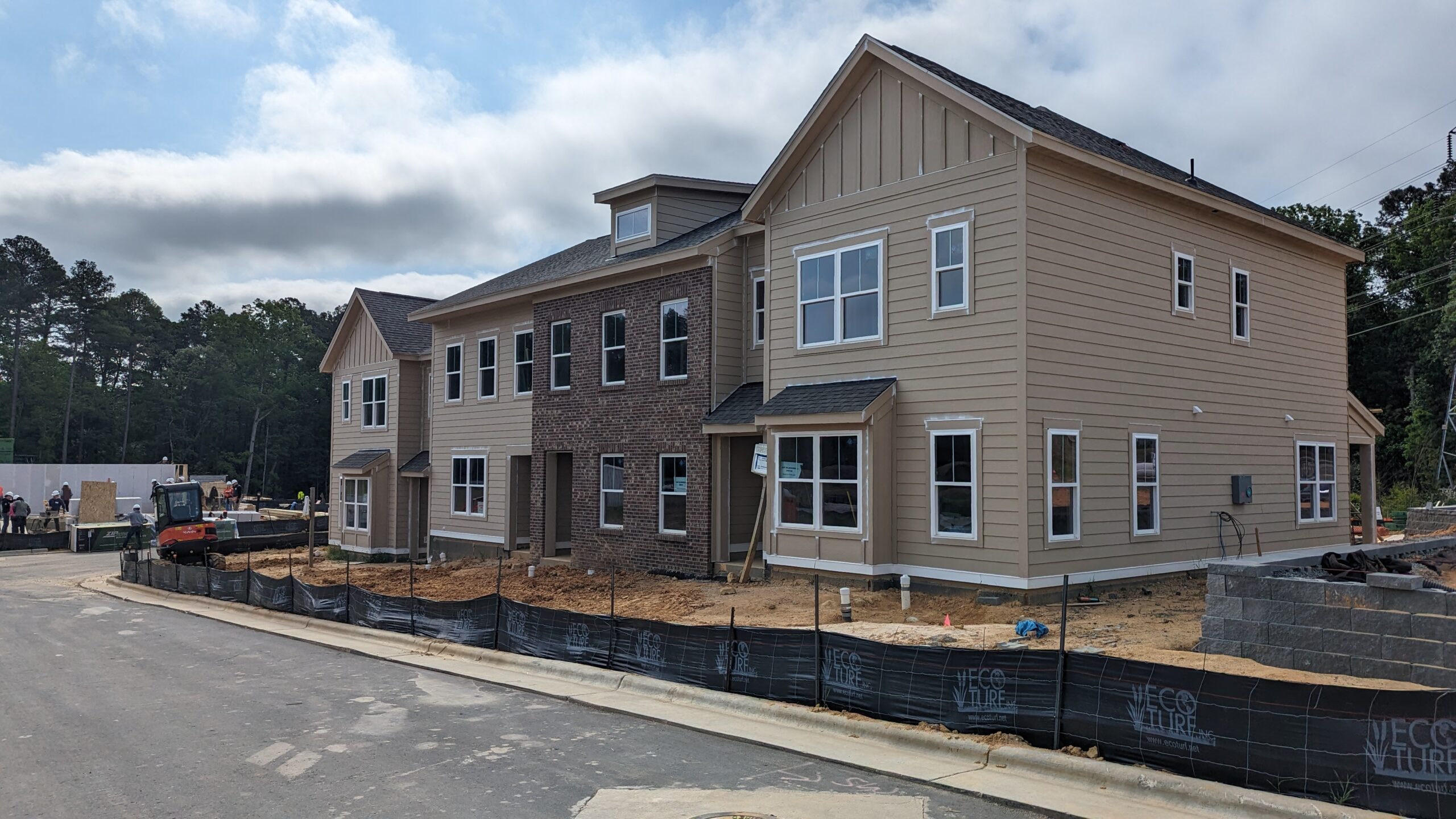
Some of the Habitat houses furthest along in their construction process at Weavers Grove, which workers began putting together about one year ago.
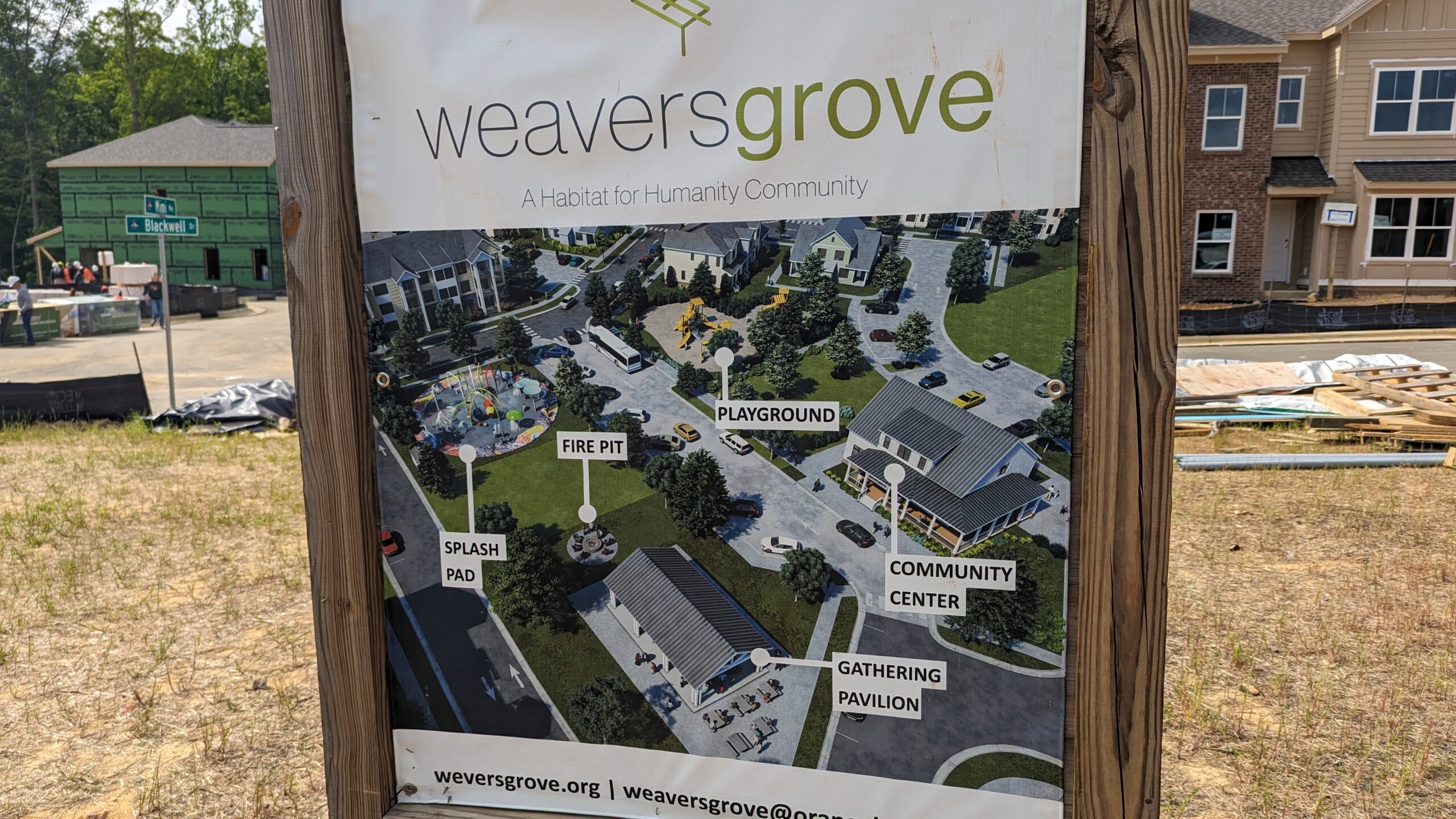
A sign at Weavers Grove showing the different neighborhood amenities offered in the idea of having residents of mixed-incomes having shared spaces together.
The Habitat homes the Triangle CEOs helped build on Friday are just a fraction of the entire Weavers Grove neighborhood — 102 of the 238 single-family homes will be sold to those in partnership with Habitat for Humanity of Orange County. There will also be dozens of homes for sale at market-rate prices that are also under construction by Garman Homes, while White Oak Properties will build a condominium building toward the center of the 32-acre property. The idea is to have a variety of housing for those with a variety of income, since studies show those communities often lead to better economic stability, educational opportunities and more for lower income residents.
Like with any major development project, cost plays a role into how Habitat and its partners are approaching the buildout. Since breaking ground in 2021, the costs of materials has not significantly dropped and the supply chain has experienced fluctuations. Player said her teams have also had to adjust their building designs to move away from building near-replicas of the market-rate homes and toward something easier for volunteer crews to put together during builds like Friday’s.
But the vision for Weavers Grove remains the same, as do the amenities Habitat plans to have in the neighborhood.
“We’ll have a basketball court, a pickleball court — that’s a new part of our design,” said Player. “In some of the green space here [near the under-construction houses], we’re going to have a playground, which is going to get started any day. We will have a state-of-the-art community center and we just received word that we got $500,000 from Rep. Valerie Foushee in the community project funding federal appropriations. That’s going to be a resiliency hub, and we’re super thrilled about that.”
The first wall of the day has been raised! @durhamhabitat @HabitatWake #CEOBuild pic.twitter.com/D3r92JQUnZ
— Habitat for Humanity of Orange County, NC (@orangehabitat) April 26, 2024
Stoltz said hearing that grand vision made Friday’s build even more excited, as she got to take part in building a future neighborhood she called “revolutionary” and hopes it will be replicated elsewhere in the U.S.
But, the Bank of America president added, she also enjoyed the opportunity to work with some big equipment and to put something together with fellow local leaders.
“I love working alongside my colleagues from Bank of America,” Stoltz said, “and meeting new friends and seeing old friends too.”
Habitat for Humanity of Orange County expects Weavers Grove low-income and market rate houses to begin being offered to buyers in the fall – with the entire neighborhood off Weaver Dairy Road projected to be finished in 2028.
Chapelboro.com does not charge subscription fees, and you can directly support our efforts in local journalism here. Want more of what you see on Chapelboro? Let us bring free local news and community information to you by signing up for our newsletter.


